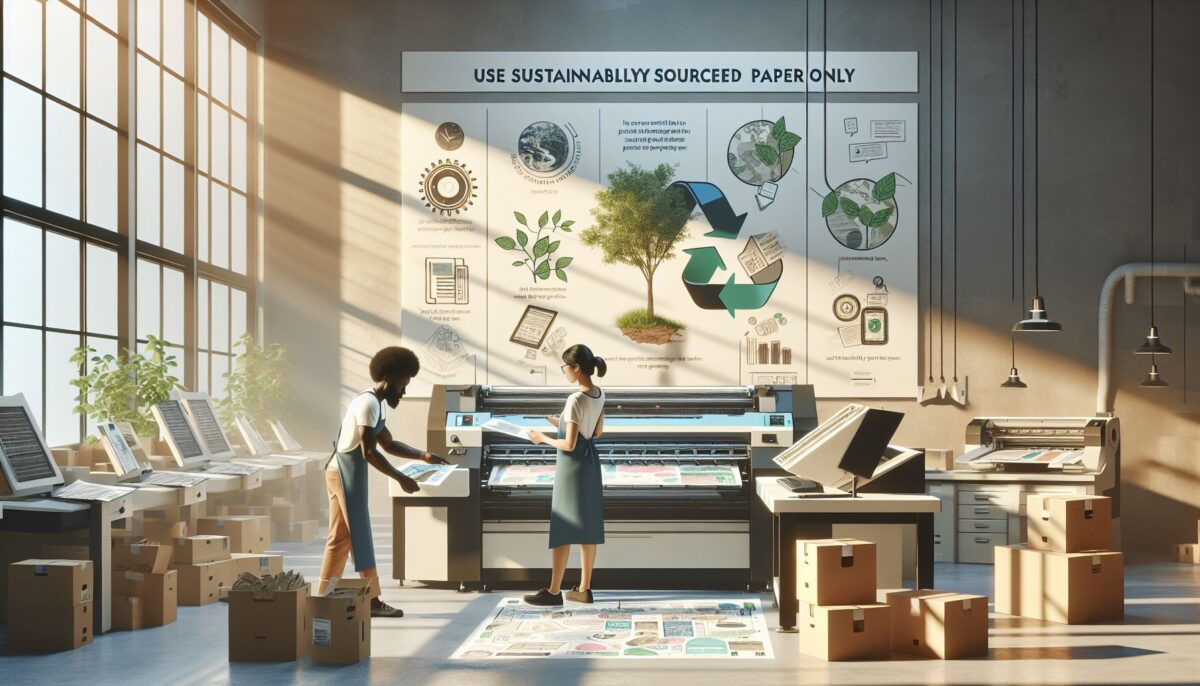In today’s fast-paced world, where digital technology has become the norm, the printing industry still plays a crucial role in our daily lives. Whether it’s printing brochures, packaging materials, or essential documents, printing remains an essential service for many businesses and individuals alike. However, the environmental impact of this industry cannot be overlooked. As concerns about climate change and environmental degradation continue to rise, it’s more important than ever for the printing industry to embrace sustainability practices.
The Environmental Impact of Printing
Printing is often associated with paper waste, energy consumption, and harmful chemicals. According to the Environmental Protection Agency, the printing industry is one of the largest consumers of water and energy in the manufacturing sector. Additionally, the production of paper and printing inks contributes to deforestation and air pollution.
One of the most significant environmental concerns related to printing is paper waste. Each year, millions of tons of paper are used for printing purposes, leading to the destruction of forests and habitat loss for many species. Moreover, the disposal of paper waste in landfills produces methane, a potent greenhouse gas that contributes to climate change.
In addition to paper waste, the production and use of printing inks also pose environmental challenges. Many printing inks contain volatile organic compounds (VOCs) and heavy metals that can be harmful to human health and the environment. Improper disposal of printing inks can contaminate soil and water sources, posing a risk to wildlife and ecosystems.
Sustainable Printing Practices
To mitigate the environmental impact of printing, many companies are adopting sustainable practices that focus on reducing waste, conserving resources, and minimizing pollution. Here are some ways in which the printing industry can embrace sustainability:
1. Use Recycled Paper
One of the simplest ways to reduce the environmental impact of printing is to use recycled paper. Recycled paper is made from post-consumer waste and requires less energy and water to produce compared to virgin paper. By opting for recycled paper, printers can help conserve forests and reduce the amount of waste sent to landfills.
2. Choose Eco-Friendly Inks
Another crucial aspect of sustainable printing is the use of eco-friendly inks. Soy-based and vegetable-based inks are a greener alternative to traditional petroleum-based inks, as they are non-toxic and biodegradable. These inks produce fewer VOC emissions and minimize the risk of soil and water contamination.
3. Implement Energy-Efficient Practices
Reducing energy consumption is another key component of sustainable printing. Printers can optimize their operations by investing in energy-efficient equipment, such as printers and drying units. Additionally, implementing energy-saving practices, such as turning off equipment when not in use and using natural lighting, can help reduce the carbon footprint of printing facilities.
4. Promote Digital Printing
Digital printing technologies have made significant advancements in recent years, offering a more sustainable alternative to traditional offset printing. Digital printing requires less setup time, produces fewer waste materials, and allows for on-demand printing, reducing the need for large print runs. By promoting digital printing, printers can minimize their environmental impact while meeting the needs of their customers.
5. Implement Waste Reduction Strategies
In addition to using recycled materials, printers can implement waste reduction strategies to minimize the amount of waste generated during the printing process. This can include optimizing print layouts to reduce paper waste, reusing materials whenever possible, and properly recycling leftover materials. By adopting a circular economy approach, printers can reduce their environmental footprint and contribute to a more sustainable future.
Conclusion
As the printing industry continues to evolve, it is essential for printers to prioritize sustainability in their operations. By adopting eco-friendly practices, such as using recycled paper, choosing non-toxic inks, and minimizing energy consumption, printers can reduce their environmental impact and contribute to a more sustainable future. Embracing sustainability in printing is not only good for the planet but also benefits businesses by attracting environmentally conscious customers and reducing costs in the long run. By working together to implement green practices, the printing industry can play a significant role in preserving the environment for future generations.

